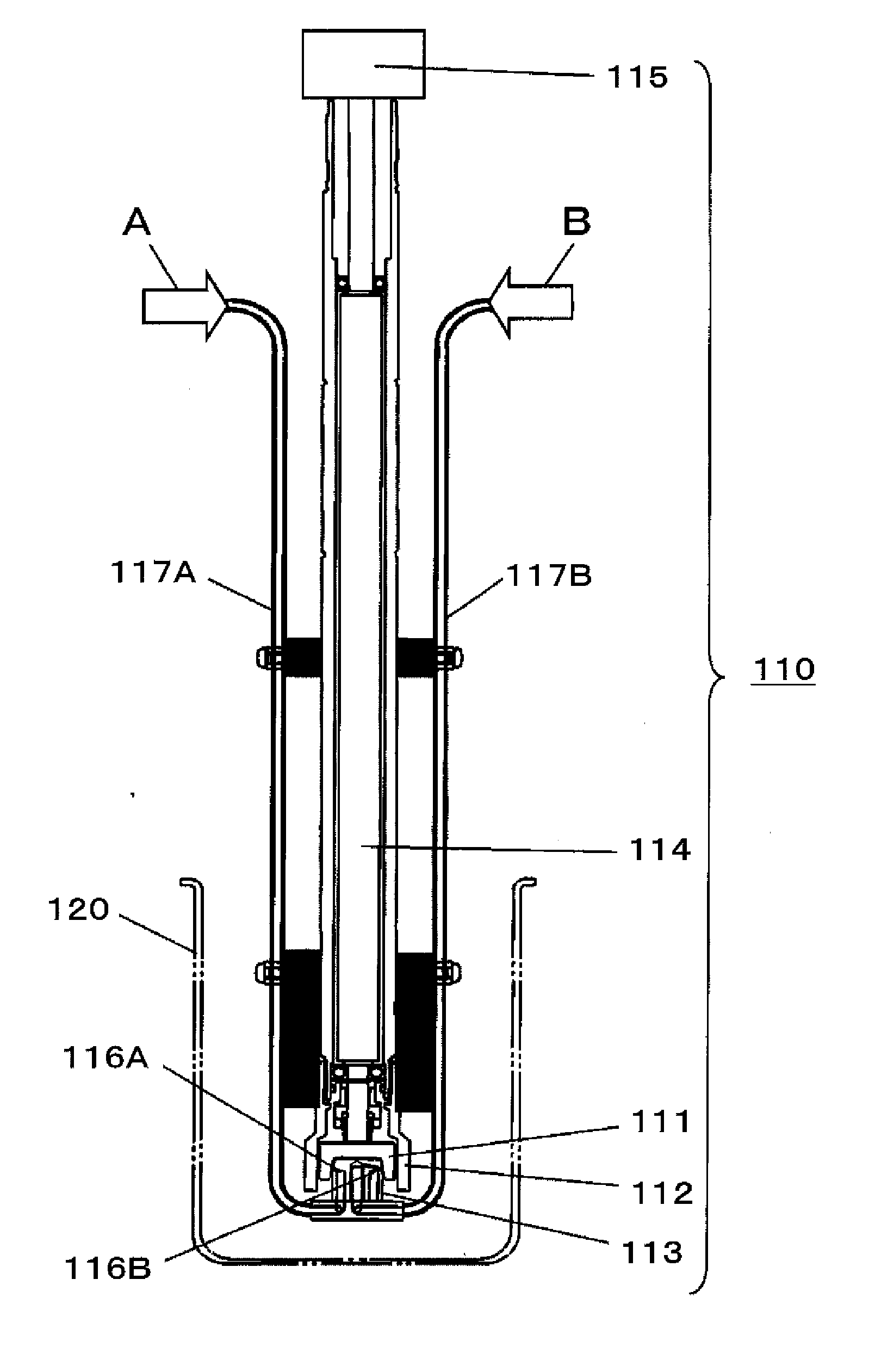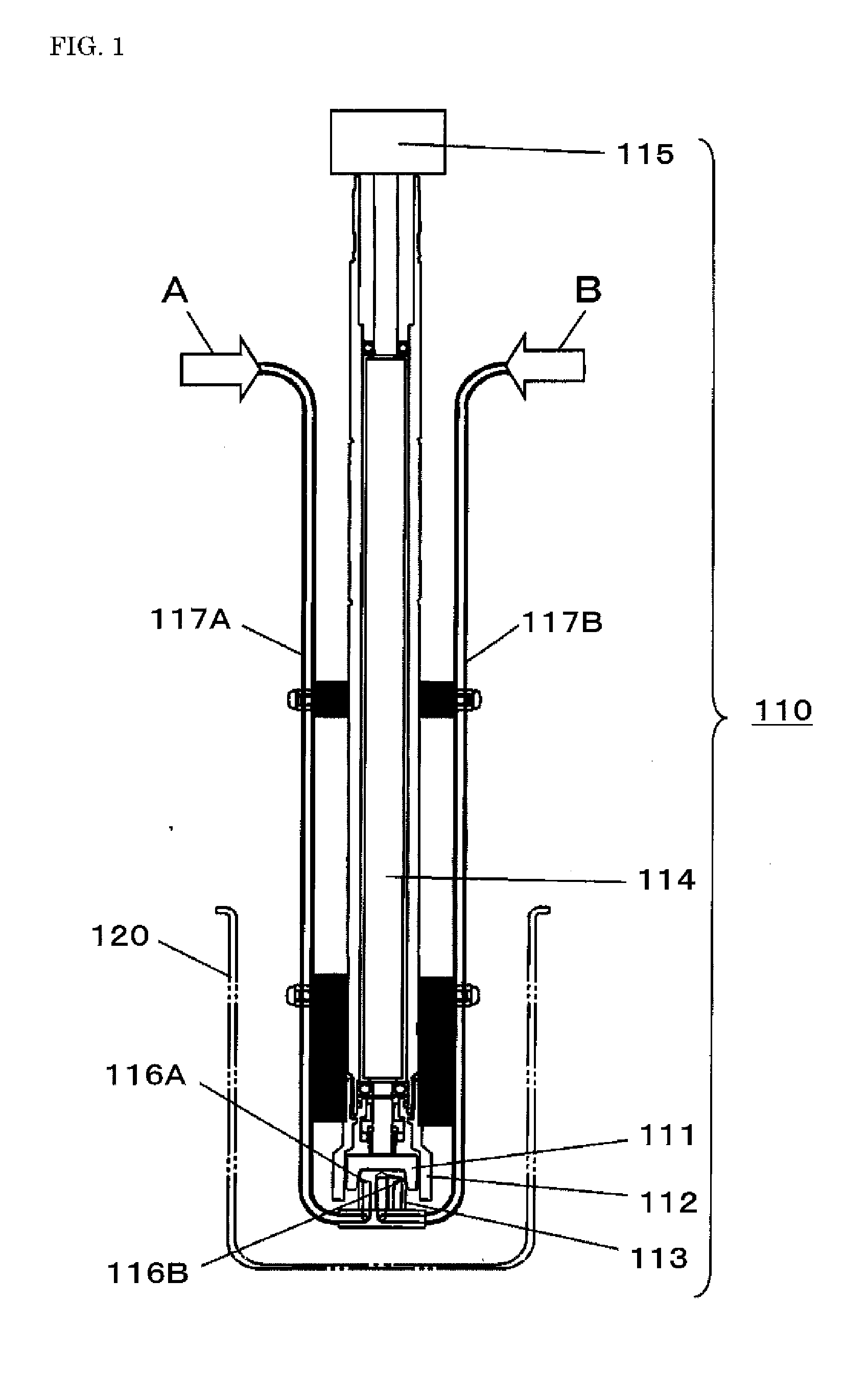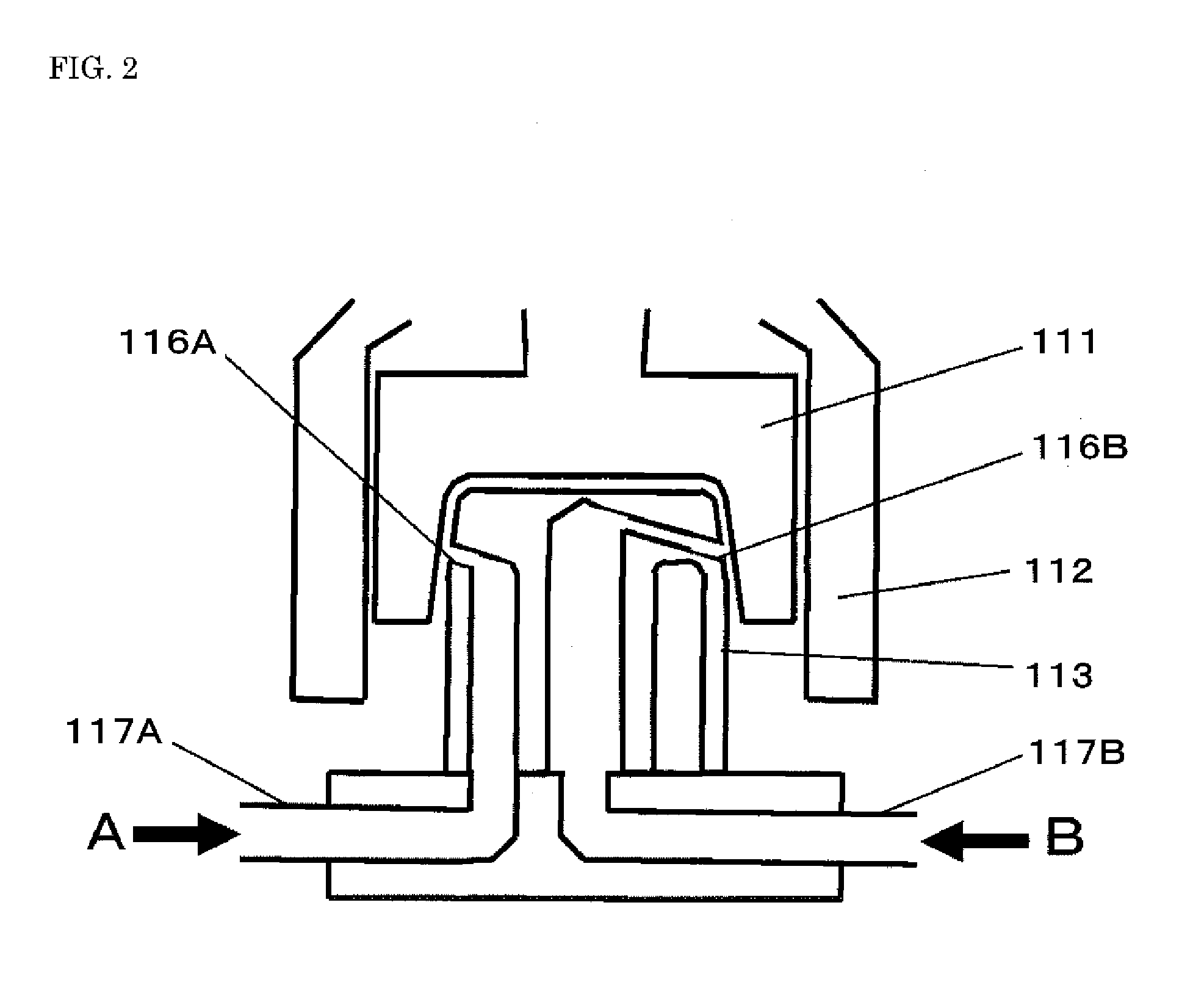Hydrogen production catalyst, method for producing hydrogen and hydrogen production apparatus using the same
a hydrogen production catalyst and hydrogen production technology, applied in the direction of catalyst activation/preparation, metal/metal-oxide/metal-hydroxide catalyst, physical/chemical process catalyst, etc., can solve the problems of composite metal oxides that are not necessarily sufficient in terms of practicability, composite metal oxides that are not described in non-patent literature 3 are prone to thermal degradation (particle growth), and composite metal oxides that are easily degraded in a case, etc., to generate hydrogen
- Summary
- Abstract
- Description
- Claims
- Application Information
AI Technical Summary
Benefits of technology
Problems solved by technology
Method used
Image
Examples
example 1
[0149]
[0150]A hydrogen production catalyst comprising a composite metal oxide of cerium oxide and praseodymium oxide was produced as follows. Specifically, first, a reaction solution was obtained by dissolving 27.4 g of diammonium cerium(IV) nitrate, 10.9 g of praseodymium(III) nitrate hexahydrate, and 48 g of urea in 400 mL of ion-exchanged water. Next, the reaction solution was heated, and stirred for 8 hours while the temperature was kept at 98° C. Thus, precipitates were formed. Note that the precipitates were generated based on the generation of ammonia due to decomposition of urea in the reaction solution during the stirring of the reaction solution with the temperature being kept at 98° C. Subsequently, the thus generated precipitates were washed in water heated to 100° C., and then filtered. The obtained solid content was dried at 95° C. for 20 hours. After that, the dried solid content was calcined at 500° C. for 5 hours, and then at 650° C. for 5 hours. Thus, a hydrogen pr...
example 2
[0157]A hydrogen production catalyst comprising a composite metal oxide of cerium oxide and praseodymium oxide (the atomic ratio (Ce:Pr) of Ce to Pr was 1:2) was obtained in the same manner as in Example 1, except that the amount of diammonium cerium(IV) nitrate used was changed from 27.4 g to 13.7 g, and that the amount of praseodymium(III) nitrate hexahydrate used was changed from 10.9 g to 21.8 g. Note that an XRD measurement conducted in the same manner as in Example 1 showed that the obtained composite metal oxide had a fluorite-type crystal structure, and had an average primary particle diameter of 21 nm. In addition, the obtained composite metal oxide had a specific surface area (BET) of 30 m2 / g. Moreover, a hydrogen production test was conducted in the same manner as in Example 1, except that the thus obtained hydrogen production catalyst was used.
example 3
[0158]A hydrogen production catalyst comprising a composite metal oxide of cerium oxide, praseodymium oxide, and aluminum oxide (the mass ratio between the oxides (cerium oxide:praseodymium oxide:aluminum oxide) was 62.7:7.3:30.0, and the atomic ratio (Ce:Pr) of Ce to Pr in the composite metal oxide was 89.4:10.6) was obtained in the same manner as in Example 1, except that the reaction solution was replaced with a reaction solution obtained by dissolving 15.0 g of diammonium cerium(IV) nitrate, 1.41 g of praseodymium(III) nitrate hexahydrate, 16.6 g of aluminum nitrate nonahydrate, and 48 g of urea in 400 g (400 mL) of ion-exchanged water. Note that an XRD measurement conducted in the same manner as in Example 1 showed that the obtained composite metal oxide had a crystal phase having a fluorite-type crystal structure, and had an average primary particle diameter of 11 nm. Note that, no crystal phase originated from alumina was observed. In addition, the obtained composite metal ox...
PUM
| Property | Measurement | Unit |
|---|---|---|
| Temperature | aaaaa | aaaaa |
| Temperature | aaaaa | aaaaa |
| Temperature | aaaaa | aaaaa |
Abstract
Description
Claims
Application Information
 Login to View More
Login to View More - R&D
- Intellectual Property
- Life Sciences
- Materials
- Tech Scout
- Unparalleled Data Quality
- Higher Quality Content
- 60% Fewer Hallucinations
Browse by: Latest US Patents, China's latest patents, Technical Efficacy Thesaurus, Application Domain, Technology Topic, Popular Technical Reports.
© 2025 PatSnap. All rights reserved.Legal|Privacy policy|Modern Slavery Act Transparency Statement|Sitemap|About US| Contact US: help@patsnap.com



